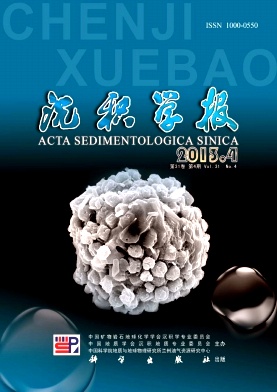Lithofacies and Carbon and Oxygen Stable Isotopic Features of Lower Paleozoic Limestone in Ordos Basin
- Publish Date: 2013-08-10
-
Key words:
- lithofacies features /
- carbon and oxygen stable isotope composition /
- limestone /
- Lower Paleozoic /
- Ordos Basin
Abstract: The lithofacies features and carbon and oxygen stable isotopes composition of Lower Paleozoic limestones in Ordos Basin change in a wide range. Based on the identification of rock thin section and cathode luminescent image, the measurement of carbon, oxygen stable isotopes of rocks and micro area of minerals, the analysis of liquid inclusion and its homogenous temperature testing, it is found that δ18O and δ13C values of micrite, grain limestone formed in normal sea water are the highest, δ18O values of grain limestone, breccia micrite, porphyritic dolomite-containing limestone or dolomitic limestone leached by meteoric water as well as freashwater calcite cements changes in a narrow range, and δ13C values of them obviously decreased with increasing of freashwater leaching degree. δ18O and δ13C values of megacryst limestone formed in de-gypsum reaction are low, which commonly exhibit zonal structure in cathodoluminescence thin section. δ18O and δ13C values of Middle-fine crystalline limestones are higher than that of megacryst limestone, which were formed in the dedolomitization reaction going with sulphate dissolution and commonly exhibit pupa structure. δ18O and δ13C values of late hydrothermal calcite cements are the lowest, in which liquid inclusion homogenous temperature varies from 100 to 150℃. Late calcite cements contain more Mn2+ and show brighter aurantium cathodoluminescence than freashwater calcite cements. The results indicate that the petrographic characteristics of limestone, carbon and oxygen stable isotope composition, and liquid inclusion homogenous temperature are important indexes to identify diagenetic environment and facies of limestone.
| Citation: | Lithofacies and Carbon and Oxygen Stable Isotopic Features of Lower Paleozoic Limestone in Ordos Basin[J]. Acta Sedimentologica Sinica, 2013, 31(04): 580-589. |






 DownLoad:
DownLoad: